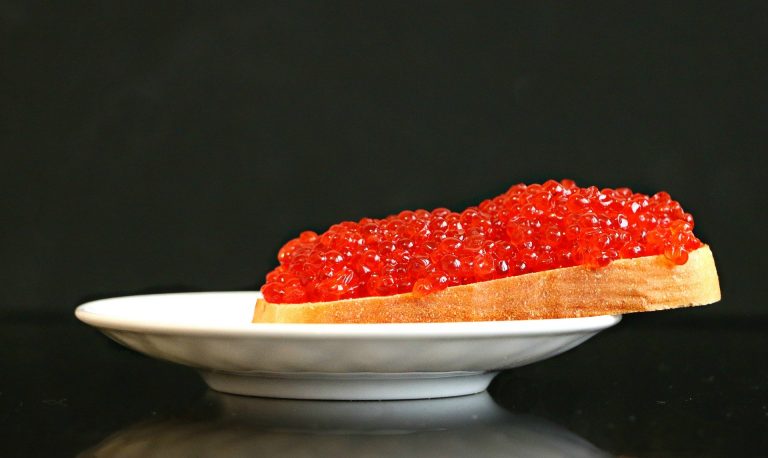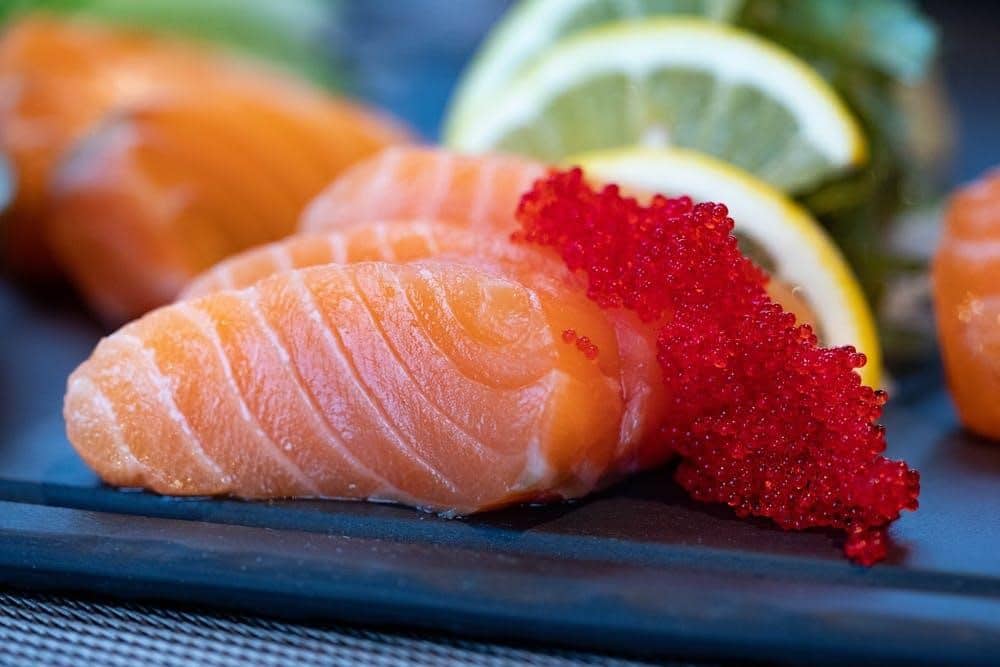
Caviar has to be one of the most head-scratching foods I have ever heard of. I didn’t know much about it before today, but what I did know is that Caviar is a fancy name for fish eggs and that they are typically consumed by people with financial means. So, I had to do some digging to learn more about this odd food that seems to drive the rich people crazy!

How to properly store caviar
Storing caviar properly is essential. Some fresh caviar will need to be refrigerated prior to opening to keep it fresh. This is because some caviar is not treated with preservatives and is extremely perishable. However, there are some caviars that are pasteurized and therefore less perishable. These containers of caviar will need to be refrigerated after opening but not necessarily before.

How to properly prepare caviar
Homemade Salmon Caviar Recipe
https://letthebakingbegin.com/homemade-salmon-caviar/#wprm-recipe-container-9057
Ingredients
- 1 Fresh Skein with Roe
- 1-gallon Hot water For rinsing
- Salt Brine
- 1/2 cup Salt
- 3 cups cold water
Equipment
- Large Bowl
- Large holed sieve/colander
- Glass Jar (for storage)
Instructions
- Set a large bowl in the sink, fill it with warm water, and set a colander or sieve into it. Make one tear along 1 skein lengthwise exposing the roe inside.
- Place the skein inside the colander and allow the warmth of the water to help shrink the outside membrane of the skein and free up some of the fish eggs. The roe might become opaque in color, do not worry this is ok.
- Gently, using your fingers continue freeing up more roe from the sack. When all of it is out, raise the sieve with the fish eggs up and down, rinsing out the impurities. Then pick out the rest of them by hand. You can drain the water and add more clean water to further clean out the roe. Remove the sieve with the roe to a clean dry bowl.
- Meanwhile make the brine: in a bowl that would fit the sieve inside stir 3 cups water and 1/2 cup kosher salt until the salt is dissolved.
- Lower the sieve with the cleansed roe into the brine. Allow to sit for several minutes or until it is salted to your liking. I kept the roe in the brine for about 3 minutes.
- Raise the sieve from the brine and transfer the salmon caviar to a paper towel to absorb the extra liquid. Then, transfer to a glass jar and refrigerate.

![]() Salmon Fillet with Caviar
Salmon Fillet with Caviar
https://www.pillsbury.com/recipes/salmon-fillet-with-caviar/350479fe-4364-4d2c-9557-1151600c99b4
Ingredients
Salmon
- 2 tablespoons chopped fresh basil
- 2 tablespoons chopped fresh parsley
- 2 tablespoons fresh lemon juice
- ½ teaspoon garlic salt
- ¼ teaspoon coarse ground black pepper SAVE $
- 1 (1-lb.) salmon fillet with skin
Sauce
- 1 cup sour cream SAVE $
- 2 tablespoons finely chopped red onion
- 1 teaspoon grated lemon peel
- 1 tablespoon fresh lemon juice
- 1 teaspoon honey
- 1 teaspoon Dijon mustard
Garnish and Bread
- Fresh basil
- Lemon slices or wedges
- ¼ cup caviar (2 colors if desired)
- 24 slices small cocktail bread, halved if desired
![]() Instructions
Instructions
- In a large skillet, combine 4 cups water, 2 tablespoons basil, parsley, 2 tablespoons lemon juice, garlic salt, and pepper. Bring to a boil. Add salmon, skin side down. Reduce heat to medium; cover and cook 6 to 10 minutes or until fish flakes easily with a fork.
- Remove salmon from the skillet. Cool 30 minutes or until completely cooled.
- In a small serving bowl, combine all sauce ingredients; mix well. Cover loosely; refrigerate until serving time.
- Just before serving, place salmon on a serving platter. (If desired, carefully remove the skin.) Garnish plate with basil and lemon slices. Place caviar on a paper towel to drain; sprinkle caviar over salmon. Serve salmon with sauce and bread slices.

Caviar nutrition
Caviar does have some nutritional value. For example, it is a. Good source of vitamin B12. The following nutritional information was found at https://en.wikipedia.org/wiki/Caviar#Storage_and_nutritional_information. This article reads, ”Although a spoonful of caviar supplies the adult daily requirement of vitamin B12, it is also high in cholesterol and salt. 1 tablespoon (16 g) of caviar contains:[58]
Energy: 42 calories
Fat: 2.86 g
Carbohydrates: 0.64 g
Fibers: 0 g
Protein: 3.94 g
Sodium: 240 mg
Cholesterol: 94 mg
Zinc: 12.18 mg”.